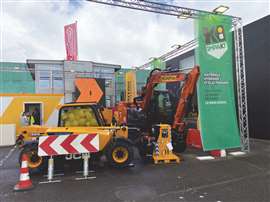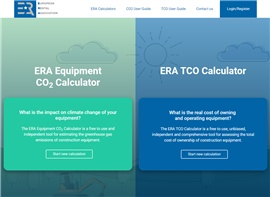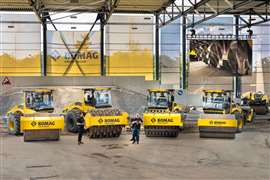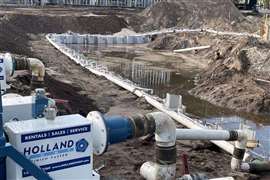Kiloutou receives approval for carbon emission reduction targets
23 June 2025
 Kiloutou’s iMPAKT range on show at Intermat
Kiloutou’s iMPAKT range on show at Intermat
Kiloutou has announced that its science-based carbon emission reduction targets have been validated by the Science Based Targets initiative (SBTi).
The validation covers the period 2023–2030 and includes a 42% reduction in Scope 1 and 2 emissions, aligned with a 1.5°C trajectory, as well as a 25% reduction in Scope 3 indirect emissions related to the manufacture and use of equipment by customers.
The company said the validation is part of its wider decarbonisation approach across each market in which it operates and confirms that its environmental transition strategy is aligned with the Paris Agreement’s goal of limiting global warming.
Olivier Colleau, CEO of Kiloutou group, said, “This validation by the SBTi is a major international recognition of our efforts to promote environmental transition.
“In the building and construction sector, which generates a significant proportion of global CO₂ emissions, we have a particular responsibility. We cannot simply follow the trend; we must be drivers of change.”
In addition to meeting the SBTi criteria, the company has launched several initiatives in recent years to promote more sustainable operations.
In 2021, it launched the iMPAKT range of low-carbon equipment in France, which has since been rolled out across Denmark and Germany.
Kiloutou has also continued to invest in the electrification of its fleet, both for internal and external operations.
Approximately a quarter of its annual CapEx is now allocated to what it defines as low-carbon equipment. In 2024, 38% of its corporate fleet was classified as low-carbon, with 19% of that being fully electric.
The company is also a founding member of the Communauté des Acteurs du Matériel Durable (CAMD), a non-profit organisation that aims to make the construction sector more sustainable.
Colleau, who is president of CAMD, told IRN earlier this year that the organisation wants to foster a shared vision and ambition for decarbonising the industry.
He said, “We want to address our current understanding of the technology which exists. So what about electric? But what about hydrogen? What about the alternatives?
“There are also a number of topics related to what does it mean in terms of organisation of on job sites? What does it mean to provide the energy on job sites? What does it mean for the workers? Do they need more training?”
STAY CONNECTED



Receive the information you need when you need it through our world-leading magazines, newsletters and daily briefings.
CONNECT WITH THE TEAM













